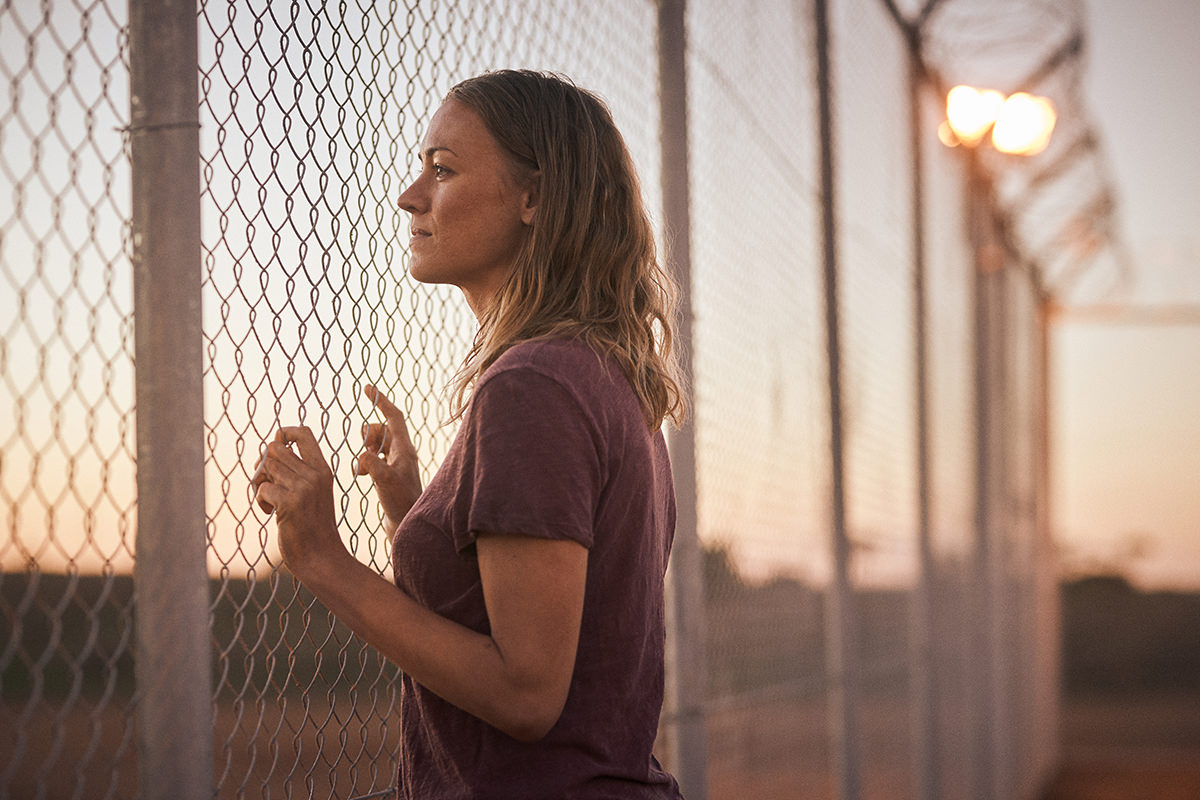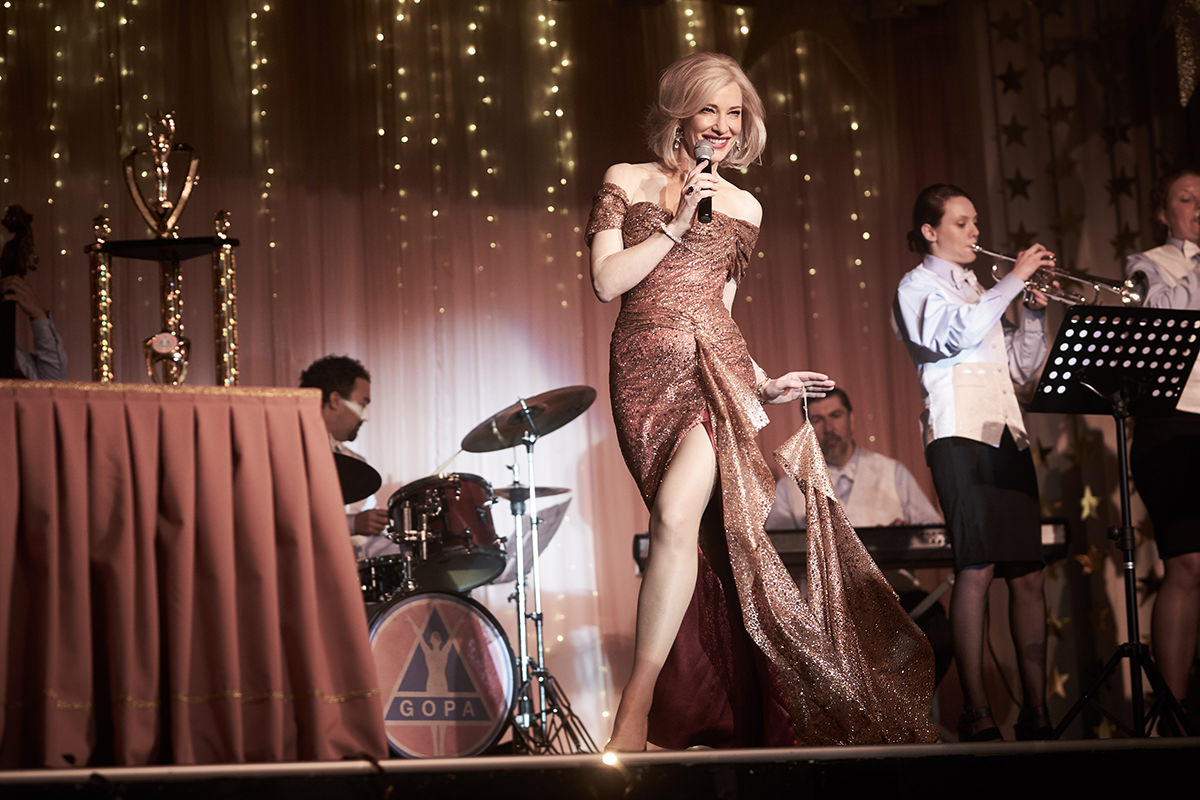Elise McCredie: showrunning and co-creating Stateless
Showrunner and writer Elise McCredie on working with Cate Blanchett and Tony Ayres to co-create the ABC series Stateless.
 Yvonne Strahovski in Stateless
Yvonne Strahovski in Stateless
It’s been a whirlwind six months for Elise McCredie.
In September 2019 the feature Ride Like a Girl, which she co-wrote with Andrew Knight, hit cinemas and climbed to the top of the box office, soon becoming the highest-grossing Australian film of the year.
But by that time, McCredie was deep in production on Stateless, the highly-anticipated six-part series that’s revving up to make its world premiere at the prestigious Berlin International Film Festival (Berlinale) on 26 February before screening on ABC from 1 March.
As showrunner, writer, co-creator and executive producer, McCredie has been guiding the series toward this point, ever since a fateful breakfast with Cate Blanchett some six years ago.
Some context first: McCredie and Blanchett’s friendship goes back decades. They went to the same high school and studied together at Melbourne University. And when their career paths diverged, with McCredie gravitating toward writing and Blanchett to acting, the pair remained good friends.
“Over the years we stayed in touch and talked about potentially doing something together,” she says.
“Then in 2014 I was at her house in Sydney and we were having breakfast and just chatting - Cate had recently started her company, Dirty Films, and I'd been writing a lot for television.
“She was talking about the company and her interest in starting to work in television and developing projects. So we just started throwing ideas around and the one that stuck and the one that we both felt really passionate about was immigration detention and how to explore that that in a dramatic and interesting way for television.
“So that was the starting point.”
From there prolific Australian television creator Tony Ayres and production company Matchbox Pictures became involved and development began.
Elise McCredie
The trio of McCredie, Blanchett and Ayres, who are credited as co-creators and executive producers of Stateless, began to flesh out the idea.
“Basically the show, the structure, the character perspective, everything started to gel quite early,” McCredie says.
Acclaimed writer Belinda Chayko, who wrote two of the six episodes, was also brought on as story producer during that first year as they figured out big questions around perspective and structure. [You can read an interview with Chayko here].
“[Belinda] was involved very early in those roundtables… and that core creative team of Tony, Cate, Belinda and I, really was the engine room and so many decisions about the show were made in that collaborative way.”
Over the next five years McCredie says that core team continued to shepherd and shape the story as the pieces of the financing puzzle started to be put together and invariably fall apart, only to be put together again.
“We were lucky that Screen Australia was supporting the development while drafts were being written, so we could still keep momentum as we were seeking to get the show greenlit,” she says.
The result is a star-studded six-episode series that follows the perspectives of four main characters whose stories converge at a detention centre: a father-of-two Cam (Jai Courtney) who starts work as a detention centre guard; the Afghan asylum seeker Ameer (Fayssal Bazzi) striving to create a better life for his family; ambitious bureaucrat Clare (Asher Keddie) on the verge of a national PR nightmare; and an airline stewardess Sofie (Yvonne Strahovski) who’s fled from a cult called GOPA, run by husband and wife team (played by Dominic West and Cate Blanchett).
To structurally balance those four key storylines was a challenge.
“Belinda Chayko is a fabulous story producer,” McCredie says. “She's also really forensic about character and trajectory of character. So Tony, Belinda and I over those years in rooms together would do massive diagrams on whiteboards that followed character lines.
“There were times we would just be tearing our hair out about a particular character, or how we were intertwining and weaving the four [stories], what was working and not working. But we would always slog through on those days and get to somewhere that we thought was dramatically interesting. [We] worked incredibly well together and our skills complemented each other.”
Then the financing came together and after years of drafting and writers’ rooms, production kicked off in South Australia in May 2019.
“Then suddenly it's ‘all systems go’,” McCredie says, emphasising the speed at which a series can go from development to production. “Whatever stage you are at, you're going to get on that train and it's a bullet train. There's no getting off that train.”
Two producers – Sheila Jayadev and Paul Ranford – were brought on board to manage the day-to-day management of the shoot.
“They were the ones every day dealing with the show from pre-production to post-production through that specific period.”
Comparatively as executive producers and co-creators, McCredie, Blanchett and Ayres had a bigger picture overview role.
“I was in Adelaide for the shoot. Cate was obviously there for the week she was acting in it,” McCredie says. “But then a lot of her notes and Tony’s notes came remotely as they looked at rushes, latest scripts and sound mixes.”
 Cate Blanchett in Stateless
Cate Blanchett in Stateless
For McCredie there was the added pressures and joy that came with being the sole showrunner on a series, an experience that was “ultimately exhilarating and a huge learning curve”.
“The showrunner role is a fairly new thing for Australia,” she says. “The showrunner needs to be across all the scripts, [ensure] there's consistency, continuity, and that character arcs are seamless…
“You're doing basically two or three jobs at the same time, trying to write multiple drafts of episodes that are coming up as well as being across the episodes that are being shot. And watching rushes every night and making sure that the show that you dreamt up with your creative collaborators is the show that's being made.
“So that's my job as a showrunner is to be the person on the ground, making sure that we're across it - that the designers, directors, the scripts, the cast, everyone – we're all making the same show.”
McCredie says the challenge in the role is juggling that collaborative hands-on approach needed when you’re making a series, along with the focused world of writing scripts.
“In an ideal world, all scripts are at their final draft before you start pre-production, but that never, ever happens. And for me personally, when writing I need to be in a very insular space where I can completely immerse myself in the world and character, [but] pre-production demands the complete opposite space, where people are asking a million questions.
“It's definitely a juggle. [But] it's a great gift to be a showrunner because as a writer in my experience you often give your scripts over to teams and producers and your job usually ends there.”
McCredie says as a showrunner, you get to see an idea through to the very end of the process – which is both hugely rewarding and validating.
“When I write, I see the show as I'm writing. So I think to then be able to have the great joy of actually being able to… see that to its fruition, in my case, right to finalising the very last sound mix a few weeks ago, is such a gift.”
McCredie says this is only made possible through collaboration - with all the creators, producers, writers, crew, cast and heads of department.
On Stateless, Emma Freeman was the set-up director and worked on the first three episodes, with Jocelyn Moorhouse directing the last three.
“Luckily we had Bonnie Elliott as a DoP who was across all six episodes as well, so her visual style, consistency and knowledge of the show really carry over the series.”
McCredie, Blanchett and Ayres knew they didn’t want this to look like what you might expect from a detention centre drama.
“We were always very clear that we didn't want the show to be gritty realist. There was a fable element to it. It was colourful,” she said.
“There was always in my head when I visualised it, the saturated colour of [the four] different story strands.”
Elliott and Freeman would create mood boards of the characters and worlds, and work alongside costume designer Mariot Kerr, production designer Melinda Doring, and hair & make-up designer Shane Thomas throughout pre-production to create the distinct looks.
“The Indonesian element had a beautiful green-blue. Then GOPA, which is a cult, went into the pastel pinks and mauves that you see in Cate's wardrobe,” she says.
“It was very much about each storyline having a particular look, but also a cohesive visual style across the whole series.”
Stateless airs on ABC from 1 March.
FURTHER RESOURCES

What to read next
Hear from Australian TV screenwriters at the top of their game including Sarah Lambert, Stephen McGregor, Mithila Gupta, Elise McCredie and more.
15 Jan 2020
Caris Bizzaca